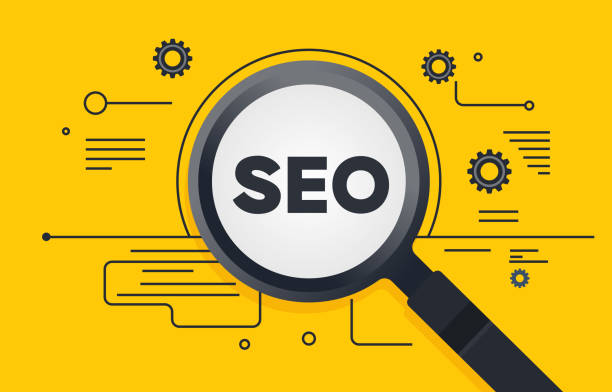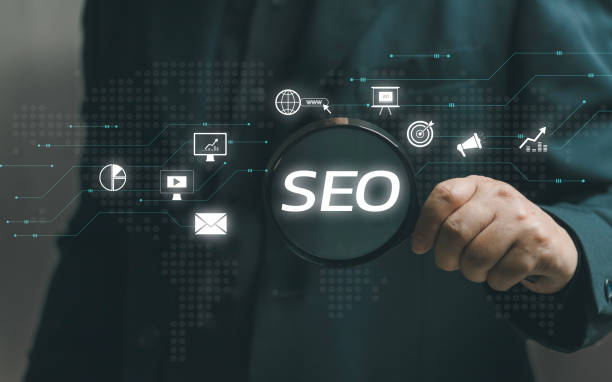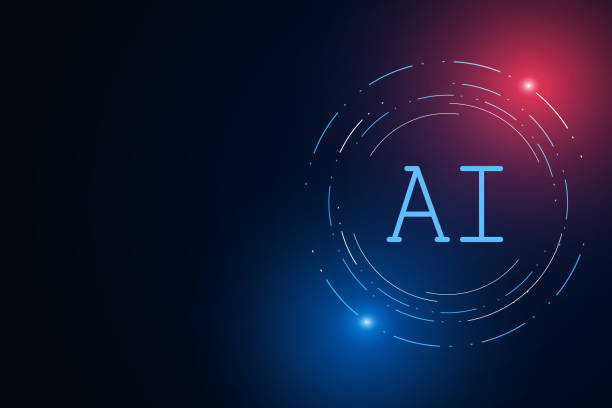What is SEO and why is it vital for your business?

In today’s digital world, visibility is of paramount importance for a business’s success.
#SEO, or Search Engine Optimization, is a process that helps your website achieve a better ranking in search engine results like Google.
This optimization includes a set of techniques and strategies whose ultimate goal is to increase #organic_traffic and attract more visitors to your website.
When users search for specific information, products, or services on search engines, a website that appears on the first pages of results has a higher chance of attracting clicks and engagement.
This demonstrates the vital importance of SEO for any online business.
In fact, SEO is a continuous educational process that requires updates and adaptations as Google’s algorithms change.
Without a strong SEO strategy, even the best content or product might never reach its target audience.
The ultimate goal of SEO is not just to increase rankings, but to attract relevant, high-quality traffic that has the potential to convert into customers.
This is a comprehensive and multifaceted process that covers aspects from technical website elements to content quality and domain authority, and requires a deep understanding of how search engines work and user behavior.
Tired of your company’s website not being seen as it deserves, and losing potential customers? Solve this problem forever with professional and effective website design by Rasawp!
✅ Increase brand credibility and gain customer trust
✅ Attract targeted sales leads
⚡ Contact us now for a free consultation!
The Main Pillars of Successful SEO

To achieve successful SEO, it’s essential to understand its three main pillars: On-page SEO, Off-page SEO, and Technical SEO.
Each of these pillars plays a vital role in improving your website’s ranking in search results and together they help create a comprehensive and effective SEO strategy.
On-page SEO refers to optimizing elements within your website, including content, HTML tags, URL structure, and internal links.
This type of SEO is directly under your control and is crucial for sending positive signals to search engines about the relevance and quality of your content.
On the other hand, Off-page SEO focuses on activities outside your website, primarily involving building high-quality backlinks from other reputable websites.
Backlinks act as votes of confidence from other websites and increase your domain’s credibility and authority in the eyes of search engines.
Finally, Technical SEO relates to the technical aspects of the website that affect its crawlability and indexability by search engines.
This includes site loading speed, mobile compatibility, the use of SSL certificates, and structured data (Schema Markup).
This is a specialized perspective that requires technical knowledge for correct implementation.
All these components work synergistically to create a strong online presence, and therefore, neglecting any of them can harm your SEO efforts.
Keyword Research: The Beating Heart of Any SEO Strategy

Keyword research is the backbone of any successful SEO strategy.
This process involves finding phrases and words that users type into search engines to find your information, products, or services.
Without the right keywords, even the best content might never reach its target audience.
The goal of keyword research is not only to find high-volume keywords but also to identify keywords that match user search intent and can drive quality traffic to your website.
This process is an explanatory and analytical part of foundational SEO.
Various tools like Google Keyword Planner, Ahrefs, and Semrush assist you in this process.
They provide information such as search volume, competition level, and related keywords.
Keywords can be categorized into different types, each having its specific application in an SEO strategy.
For example, short-tail keywords are generally one or two words and have high search volume but also high competition.
In contrast, long-tail keywords are phrases of three or more words that have lower search volume but indicate a more specific search intent and higher conversion rates.
This table helps you better understand the differences:
| Type of Keyword | Description | Example | Competition/Intent |
|---|---|---|---|
| Short-tail Keywords | General and short phrases, high search volume | “Shoes” | High competition, ambiguous intent |
| Long-tail Keywords | Longer and more specific phrases, precise search intent | “best running shoes for marathon” | Lower competition, more specific intent, higher conversion rate |
Choosing the right keywords means selecting words that are not only searched by your audience but also words for which you can rank well in search results.
This section is vital for any SEO strategy and is a prerequisite for all subsequent website optimization activities.
On-page SEO and Content Optimization

On-page SEO refers to a set of actions you perform within your website to improve its ranking in search engines.
These actions include optimizing content, HTML code, and website structure.
Optimizing the Title Tag is one of the most important parts.
The title tag should not only include the main keyword of the page but also be attractive and encouraging to prompt users to click.
Also, the Meta Description, which is a short summary of the page’s content displayed below the title in search results, should be filled with keywords and provide an appealing description.
Although it doesn’t directly influence rankings, it can significantly improve the click-through rate (CTR) and indirectly help with SEO.
Correct use of Heading tags (H1, H2, H3, etc.) is also crucial.
H1 should include the page’s main keyword and be used only once per page, while H2 and H3 are used for organizing content and subheadings and can include secondary keywords.
This structuring helps search engines better understand your content’s structure and topic.
Optimizing URLs (web page addresses) should not be forgotten; URLs should be short, readable, and include relevant keywords.
For example, instead of a long and meaningless URL, use a short and descriptive one.
Images also play a role in on-page SEO; optimizing the alt tag for images helps search engines understand the image content and is also beneficial for website accessibility.
Internal links, which connect different pages of your website to each other, distribute link equity throughout your website and help search engines crawl and index your pages more effectively.
All these actions work synergistically to make a web page optimized and understandable from the perspective of search engines and users, and help improve your SEO ranking.
This process is an explanatory and comprehensive guide for optimizing your pages.
Tired of losing business opportunities due to not having a professional company website? Don’t worry anymore! With Rasawp’s corporate website design services:
✅ Your brand’s credibility and professionalism will increase.
✅ You will attract more customers and sales leads
⚡ Get a free consultation now to get started!
Creating Valuable Content for SEO

Content is king; this statement holds truer than ever in the world of SEO.
Creating valuable, relevant, and high-quality content is the cornerstone of any successful SEO strategy.
Search engines, especially Google, love content that answers users’ questions, solves their problems, and provides deep and accurate information.
This content should not only be optimized for search engines but also engage users.
There are various types of content, each contributing differently to your SEO strategy:
- Thought-Provoking Content: This type of content encourages users to think and is usually presented as Q&A or intellectual challenges.
Its goal is to create engagement and discussion, which can generate positive signals for SEO ranking. - News Content: News content includes informing about current events, updates, and industry news.
This type of content can attract significant traffic in a short period and establish your website as an up-to-date information source. - Instructional Content: How-to guides and tutorials are designed to solve specific user problems.
These contents usually include step-by-step instructions and detailed explanations and can be very useful. - Entertaining Content: Entertaining content such as infographics, videos, games, or quizzes engage users and increase their time spent on the site.
This type of content can be naturally shared and send strong social signals for SEO. - Analytical Content: Analytical content includes in-depth reviews, case studies, and data analysis.
This type of content is useful for specialized and professional audiences and can increase your website’s authority in a particular domain.
The most important point in content creation is its alignment with user search intent.
If a user is looking for guidance, you should provide a guide article, not news content.
Your content must be comprehensive, accurate, and up-to-date to be recognized as a credible source and continuously improve your SEO ranking.
Content marketing is an integral part of an SEO strategy that brings long-term results.
Off-page SEO and the Power of Backlinks

Off-page SEO refers to activities performed outside your website that significantly impact its ranking in search engines.
The most important and effective factor in off-page SEO is backlinks.
Backlinks, or inbound links, are links from other websites to your website.
Search engines view backlinks as a vote of confidence or “recommendation” from other websites.
The greater the number and quality of inbound backlinks to your website, the more its authority increases in the eyes of search engines, resulting in improved SEO ranking.
However, not all backlinks are equal.
The quality of a backlink is far more important than its quantity.
A backlink from a reputable, relevant, and high-authority website is worth significantly more than several backlinks from spammy or irrelevant websites.
In fact, bad backlinks can harm your SEO ranking.
There are various methods for building quality backlinks:
- Publishing High-Quality Content: Excellent content naturally attracts links (Link Bait).
If your content is unique, informative, and shareable, other websites will be more inclined to link to it. - Guest Posting: Writing articles for other websites in your industry and including a link back to your website in that article.
- Broken Link Building: Finding broken links on reputable websites and suggesting your own content as a replacement.
- Media Outreach and Digital PR: Creating newsworthy content or case studies that can attract media attention and result in news coverage and link acquisition.
Off-page SEO also includes other activities, such as social media presence, participation in online forums, and local business listings.
These activities do not directly affect SEO ranking but can generate referral traffic and increase your website’s visibility, ultimately helping your SEO indirectly.
A specialized link-building strategy is essential to prevent potential Google penalties.
Technical SEO and Your Website’s Infrastructure

Technical SEO refers to optimizing the technical aspects of your website so that search engines can crawl and index it more effectively.
These aspects directly impact user experience as well.
A website with a strong technical infrastructure has a higher chance of ranking well in search results.
Page Speed is one of the most important technical factors for SEO.
Both users and search engines prefer fast websites.
Slow websites can lead to an increased Bounce Rate and a decrease in rankings.
Using image compression, caching, and code optimization can help improve speed.
Mobile-Friendliness is also crucial, as most searches are currently performed via mobile devices.
Google penalizes websites that are not optimized for mobile.
Using Responsive Design is the best way to ensure your website’s mobile compatibility.
Website security is also ensured by using HTTPS (SSL Certificate), which not only encrypts user data but is also considered a positive signal for SEO.
This table provides a checklist of important technical factors for SEO:
| Technical Factor | Importance | Tool/Method for Check |
|---|---|---|
| Page Loading Speed | Reduces bounce rate, improves user experience and SEO ranking | Google PageSpeed Insights |
| Mobile Compatibility | Most users use mobile, higher ranking | Google Mobile-Friendly Test |
| HTTPS (SSL) | Website security, ranking signal | Lock icon in browser address bar |
| XML Sitemap | Guides search engines for crawling pages | Google Search Console |
| Robots.txt File | Controls crawler access to pages | Check file in website root |
| Structured Data (Schema Markup) | Helps search engines understand content, Rich Snippets | Schema.org, Google Structured Data Testing Tool |
Proper Crawl Management using the robots.txt file and XML sitemap is also highly important.
These tools help search engines find and index your pages more efficiently and prevent wasted Crawl Budget.
Technical SEO provides a strong foundation for all other SEO efforts.
Without this robust infrastructure, even the best content and strongest backlinks cannot reach their full potential.
This is a completely specialized and essential part of optimization.
Measuring SEO Success and Analytical Tools

After implementing your SEO strategy, it’s crucial to measure results and monitor performance.
Without precise measurement, you cannot understand what is working and what needs improvement.
Numerous analytical tools are available to assist you in this regard, allowing you to clearly observe your progress in search engine optimization.
Google Analytics is one of the most powerful and widely used tools.
This tool provides comprehensive data about your website visitors, including the number of visitors, pages visited, time spent on site, bounce rate, and traffic sources.
Using Google Analytics, you can see whether your organic traffic is increasing and which keywords are bringing users to your website.
These insights are vital for adjusting and improving your SEO strategy.
Another tool is Google Search Console, which provides direct information from Google about your website’s performance in search results.
This tool shows you which keywords have led to your website’s appearance in search results (Impressions), their click-through rate (CTR), and also identifies technical website issues that may affect SEO, such as crawl errors or unindexed pages.
Search Console is an invaluable guidance tool for every SEO specialist.
In addition to these free Google tools, there are also paid and more advanced tools like Ahrefs, Semrush, and Moz, which offer more capabilities for keyword research, backlink analysis, and rank tracking.
Important Key Performance Indicators (KPIs) to monitor include:
- Organic Traffic: The number of visitors from search engines.
- Keyword Rankings: Your website’s position for target keywords.
- Click-Through Rate (CTR): The percentage of users who click on your link after seeing it in search results.
- Bounce Rate: The percentage of users who leave your site after viewing one page without interacting with other pages.
- Conversion Rate: The percentage of users who complete your desired action (e.g., purchase or registration).
By regularly analyzing this data and making necessary adjustments, you can optimize your SEO strategy and achieve more desirable results.
This specialized and data-driven approach ensures the sustainability of your SEO success.
Is your company’s website as professional and trustworthy as it should be? With specialized corporate website design by Rasawp, create an online presence that reflects your credibility and attracts more customers.
✅ Build a powerful and professional image for your brand
✅ Convert visitors into real customers
⚡ Get a free consultation now!
The Future of SEO: AI, Voice Search, and Beyond

The world of SEO is constantly evolving, and with the emergence of new technologies, strategies must also adapt.
Two of the most important future trends that will impact SEO are Artificial Intelligence (AI) and Voice Search.
AI, especially with Google’s algorithms like BERT and RankBrain, helps search engines better understand user search intent and provide more relevant and accurate results.
This means that optimizing for keywords alone is not enough; your content must truly answer users’ questions and comprehensively cover the topic.
Voice search is also rapidly growing and changing how users interact with search engines.
When people speak to voice assistants like Siri, Google Assistant, or Alexa, they usually use natural language and longer sentences.
This means that long-tail keywords and conversational content gain more importance.
To optimize for voice search, you need to pay attention to how people speak and optimize your content to answer direct questions and natural phrases.
This is a new educational field that requires a deep understanding of user behavior.
Furthermore, the concept of E-A-T (Expertise, Authoritativeness, Trustworthiness), introduced by Google, continues to increase in importance.
This means that to rank high, your website must be recognized as a credible and trustworthy source in its field.
This includes having expert authors, credible references, and a strong brand.
SEO is no longer just about technical techniques but is increasingly dependent on the overall quality and credibility of your brand and content.
Also, User Experience (UX) plays a more prominent role in SEO.
Site speed, ease of navigation, and attractive visual design, all are factors that can influence how users interact with your website and ultimately your SEO ranking.
As search engines become smarter, their focus on providing the best possible user experience increases.
Therefore, a forward-thinking SEO strategy must constantly align with these changes and emphasize providing real value to users and building a reputable brand, rather than just focusing on keywords.
This is an analytical and predictive approach to long-term success in SEO.
Common SEO Mistakes and How to Avoid Them

On the path to SEO, there are mistakes that can undermine your efforts and even harm your website’s ranking.
Understanding these mistakes and knowing how to avoid them is an important part of any successful SEO guide.
One common mistake is keyword stuffing.
In the past, some webmasters tried to trick search engines by repeatedly stuffing keywords into content.
However, modern Google algorithms identify this behavior as spam and penalize the website.
Your content should be natural and written for human readers, not just for search engines.
Duplicate content is also a serious problem.
Publishing identical content on multiple pages or websites confuses search engines and can harm your ranking.
Always produce unique and valuable content.
Neglecting mobile optimization is another big mistake.
Given the significant increase in mobile device usage for searching, a website that is not responsive and does not display well on mobile will not only provide a bad user experience but will also be penalized by Google.
A slow loading website can also cause users to leave and decrease your SEO ranking.
Page loading speed is an important ranking factor and should be continuously monitored and improved.
Furthermore, some Black Hat SEO techniques, such as link buying, cloaking, and automated content, can lead to short-term results but will ultimately result in severe penalties from Google, which are very difficult to recover from.
Always use White Hat SEO and ethical methods for sustainable success.
Lack of data analysis and neglecting analytical tools like Google Analytics and Search Console is also a common mistake.
Without data, you don’t know what works and what needs improvement.
Regular monitoring of SEO performance allows you to optimize your strategy and avoid mistakes.
SEO is a complex and ongoing process that requires patience and precision.
By avoiding these common mistakes, you can pave the way for a specialized and successful strategy and help your website achieve sustainable visibility in search results.
Frequently Asked Questions (FAQs)
| Question | Answer |
|---|---|
| What is SEO? | SEO, or Search Engine Optimization, is the process of increasing the quality and quantity of website traffic by improving the site’s ranking in organic search engine results like Google. |
| What are the main types of SEO? | SEO is divided into three main categories: On-Page SEO, Off-Page SEO, and Technical SEO. |
| What does On-Page SEO include? | On-Page SEO involves optimizing elements within the website, such as keywords, Title Tags, Meta Descriptions, content, URL structure, images, and internal links. |
| What is Off-Page SEO? | Off-Page SEO refers to activities outside the website that help improve its ranking, such as Backlink Building, social media marketing, and Brand Mentions. |
| What is Technical SEO? | Technical SEO deals with optimizing the technical aspects of a website to help it be crawled and indexed better by search engines. This includes site speed, mobile-friendliness, site structure, Sitemaps, and the Robots.txt file. |
| What role do Keywords play in SEO? | Keywords are phrases that users enter into search engines. Correct and targeted use of relevant keywords in content and site elements helps search engines understand your page’s topic and display it for relevant searches. |
| What is a Backlink and why is it important? | A backlink, or inbound link, is a link from one website to another. Backlinks act as a “vote of confidence” from other sites for search engines and play a significant role in a site’s authority and ranking improvement, especially if they are from reputable sites. |
| What impact does quality content have on SEO? | Quality, relevant, comprehensive, and unique content not only attracts and retains users but also signals to search engines that your page is valuable. This helps improve rankings, reduce the Bounce Rate, and increase user time on site. |
| Why is site loading speed important for SEO? | Site loading speed is an important ranking factor for Google. Faster sites provide a better user experience, have lower bounce rates, and are preferred by search engines. |
| Is SEO a one-time process? | No, SEO is a continuous and long-term process. Search engine algorithms are constantly changing, competition is increasing, and site content also needs updates. Therefore, SEO requires continuous monitoring, analysis, and optimization. |
And other services of RasaWeb Advertising Agency in the field of advertising
Smart Reportage: A combination of creativity and technology for analyzing customer behavior through user experience customization.
Smart Marketplace: Revolutionize click-through rates with custom programming.
Smart Marketing Automation: Professional optimization to increase sales using custom programming.
Smart Social Media: A new service for enhanced customer behavior analysis through intelligent data analysis.
Smart Digital Branding: A fast and efficient solution for increasing sales with a focus on intelligent data analysis.
And over hundreds of other services in internet advertising, advertising consultation, and organizational solutions
Internet Advertising | Advertising Strategy | Advertorials
Sources
Comprehensive Website SEO Guide – Mizbanfa
What is SEO? – Faradars
Key Website SEO Tips – Webramz
Website SEO Training – SEO20
? For your business to shine in the digital world, Rasawp Afarin is by your side with its comprehensive services, including corporate website design, SEO, and online marketing.
📍 Tehran, Mirdamad Street, next to Bank Markazi, Southern Kazeroun Alley, Ramin Alley, No. 6




